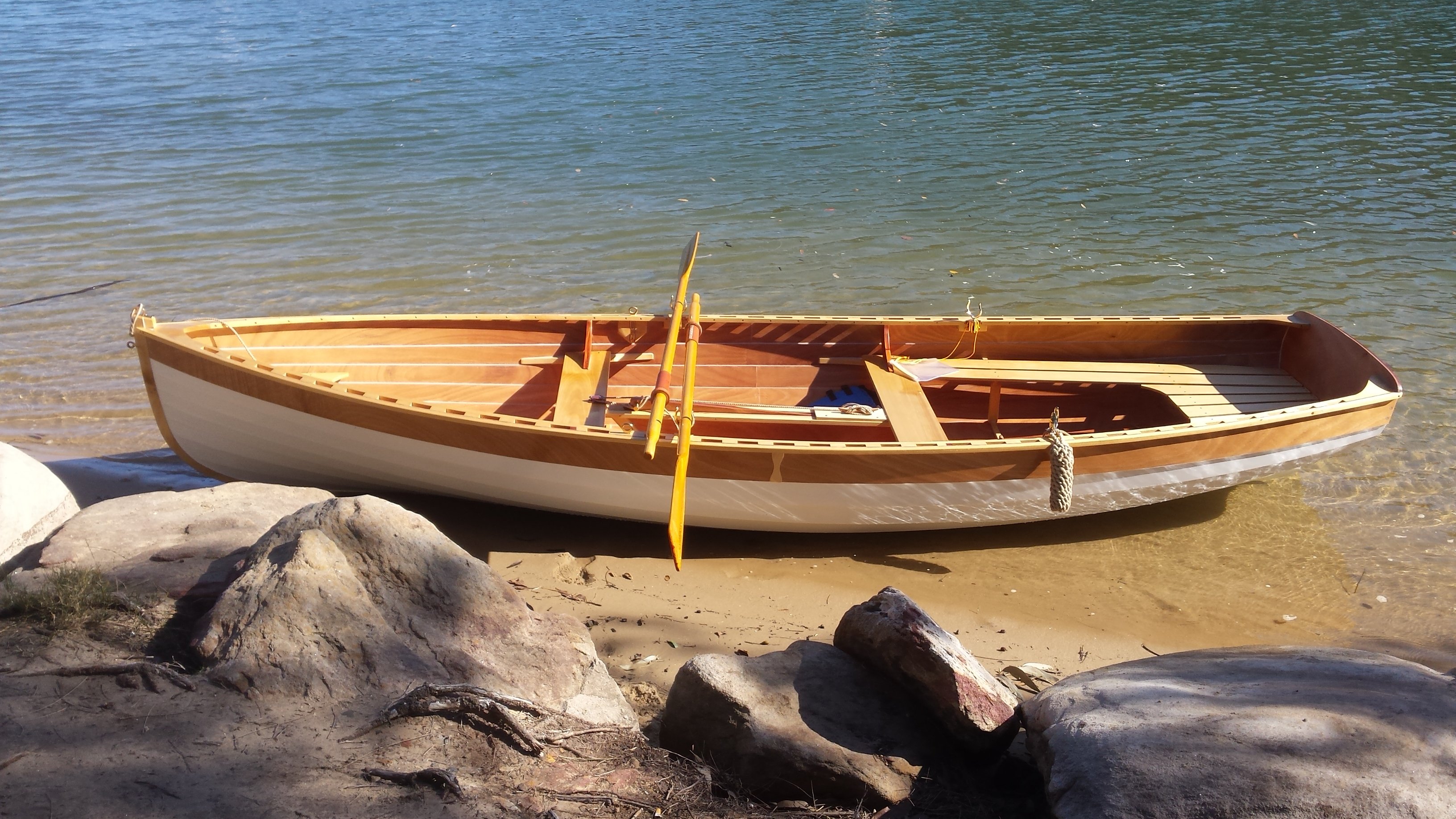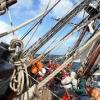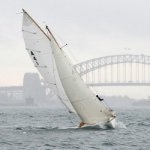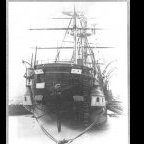MORE HANDBOOKS ARE ON THEIR WAY! We will let you know when they get here.
×
-
Posts
1,281 -
Joined
-
Last visited
Reputation Activity
-
 Bedford got a reaction from Knocklouder in Herzogin Cecilie 1902 by Jim Lad - Four Masted Barque
Bedford got a reaction from Knocklouder in Herzogin Cecilie 1902 by Jim Lad - Four Masted Barque
Best wishes John
-
 Bedford got a reaction from FriedClams in Herzogin Cecilie 1902 by Jim Lad - Four Masted Barque
Bedford got a reaction from FriedClams in Herzogin Cecilie 1902 by Jim Lad - Four Masted Barque
Best wishes John
-
 Bedford reacted to Jim Lad in Herzogin Cecilie 1902 by Jim Lad - Four Masted Barque
Bedford reacted to Jim Lad in Herzogin Cecilie 1902 by Jim Lad - Four Masted Barque
Had a bit of a break between our holiday and starting treatment, so here's a final final update for a while! 🙂
The mizzen upper topgallants are now rigged and the sharp eyed might also notice that the fore lower shrouds are also sporting ratlines. Only one more square sail to go and then the full ratline, lower sheet, brace thing happens, plus some deck details I can't put on yet.
The 'Duchess' will hopefully return to active duty in mid November!
John
-
 Bedford got a reaction from Mark Pearse in Ranger type yacht by Mark Pearse - 1:12 - SMALL
Bedford got a reaction from Mark Pearse in Ranger type yacht by Mark Pearse - 1:12 - SMALL
Mate, I can handle that. Send me a drawing
-
 Bedford got a reaction from Keith Black in Ranger type yacht by Mark Pearse - 1:12 - SMALL
Bedford got a reaction from Keith Black in Ranger type yacht by Mark Pearse - 1:12 - SMALL
Mate, I can handle that. Send me a drawing
-
 Bedford got a reaction from Jack12477 in Ranger type yacht by Mark Pearse - 1:12 - SMALL
Bedford got a reaction from Jack12477 in Ranger type yacht by Mark Pearse - 1:12 - SMALL
Mark, beautiful work as usual, if the winch bases are just circular I can run them up on the lathe for you so you can tin the lot properly.
-
 Bedford got a reaction from Mark Pearse in Ranger type yacht by Mark Pearse - 1:12 - SMALL
Bedford got a reaction from Mark Pearse in Ranger type yacht by Mark Pearse - 1:12 - SMALL
Mark, beautiful work as usual, if the winch bases are just circular I can run them up on the lathe for you so you can tin the lot properly.
-
 Bedford reacted to Mark Pearse in Ranger type yacht by Mark Pearse - 1:12 - SMALL
Bedford reacted to Mark Pearse in Ranger type yacht by Mark Pearse - 1:12 - SMALL
Thank you Steve & welcome Welfack, & hi to everyone -
I've now almost completed the timber work, & apart from the spars just the tiller remains to be done now. Then I'll work on the spars & metalwork. This boat has stainless steel fittings, so I'll be painting the metalwork silver. This recent work includes deck & cockpit timber details, all unfinished (weathered) teak.
The bases for the cockpit winches, which are used mainly for the running backstays.
The deck cutwaters, deck winch bases & a small base for a cam cleat fitting - that are all alongside the main hatch. And the large cutaway on the port side cutwater is a support for the spinnaker pole.
The Sampson post & the forwards support chock for the spinnaker pole. The sampson post isn't fixed down yet, there will be a mortise for the bowsprit, to be cut into the forward side face.
And the port side cutwater. The small holes are for the lines that lead to the cam cleats: spinnaker topping lift one side & spinnaker pole kicker the other. I'm not sure what the 3rd one is, but will find out.
They were tricky to drill due to the angles & the fact that regular drill bits down't work well at angles, especially if it's a small hand drill. What I did was: to initially drill the holes & then put CA glue on it all to harden the timber up, drill right through & CA to the hole...then when hard clean it all up. I also found that a 1mm wide strip of sandpaper was quite a useful way to sand inside the angled holes.
thanks,
-
 Bedford reacted to wefalck in Pomeranian Rahschlup 1846 by wefalck – 1/160 scale – single-masted Baltic trading vessel
Bedford reacted to wefalck in Pomeranian Rahschlup 1846 by wefalck – 1/160 scale – single-masted Baltic trading vessel
The shipyard had been closed for much of August, only the drawing office stayed open to prepare work for autumn ...
********************
Anchor-winch 4
The remaining item for the winch is the pawl-bit against which also the bowsprit rests. It is surprisingly thin, only 240 mm square, according to the original drawing, which conveniently translates to 1.5 mm on the model.
A strip a tad wider than 2 mm was cut from a scrap of 1.5 mm thick acrylic glass. Care was taken to cut it parallel to a manufacturing edge, which is clean and square. In this way, only one edge needed to be machined and the manufactured edge provided a good datum for this.
The pawl rest in a cast-iron U-shaped frame that is bolted to the front of the post (updating the design a bit from the older style wooden pawls drawn in the original drawing). Rather than adding this part to the post, I decided to mill it from the solid. Hence the 2 mm strip.
Originally, I intended to drill 0.15 mm holes for the axes of the pawls, but my drills turned out to be too short for that. This would not be really necessary at this scale anyway, but would have later, once a wire was inserted, facilitated the positioning of the pawls. I have to eyeball it now.
Milling the groove into the ‘cast-iron’ frame
The post was milled to size, letting material for the frame for the pawls standing. The shape of the frame was then milled out and the ends rounded with a safe-edge file. In the final machining step, the groove was cut.
Shaping the head of the pawl-bit
I don’t have square collets (I plan to make one day a set of square insert collets for precisely holding square stock), so a round one had to make do for the next operation, namely shaping the head of the pawl-bit with different burrs. Because of the relatively soft acrylic glass and with light cuts, this is not a problem.
Shaping the head of the pawl-bit
The pawls will be short lengths of 0.2 mm x 1 mm styrene strips, but will be made only later, when everything comes together so as not to lose those tiny bits.
To be continued …
-
 Bedford got a reaction from Mark Pearse in Ranger type yacht by Mark Pearse - 1:12 - SMALL
Bedford got a reaction from Mark Pearse in Ranger type yacht by Mark Pearse - 1:12 - SMALL
Mate, she's beautiful. Great details!
-
 Bedford got a reaction from Jack12477 in Ranger type yacht by Mark Pearse - 1:12 - SMALL
Bedford got a reaction from Jack12477 in Ranger type yacht by Mark Pearse - 1:12 - SMALL
Mate, she's beautiful. Great details!
-
 Bedford reacted to Mark Pearse in Ranger type yacht by Mark Pearse - 1:12 - SMALL
Bedford reacted to Mark Pearse in Ranger type yacht by Mark Pearse - 1:12 - SMALL
Thank you everyone,
I'm now back from a Nordic trip in the northern hemisphere summer, & have now finished & assembled more of the details around the cockpit & face of the raised deck. The horizontal varnished trimming pieces both sides of the companionway, which insect with a vertical varnished piece each side; & the weathered teak cockpit seat backrests.
Overall view:
Detail, & I can see the pencil alignment mark needs to be removed:
The junction of the strips was difficult to get, but happy with this:
Detail, showing the drain openings & another pencil mark to be removed...
Trimming piece, against the deck.
thanks for looking in,
-
 Bedford reacted to wefalck in Pomeranian Rahschlup 1846 by wefalck – 1/160 scale – single-masted Baltic trading vessel
Bedford reacted to wefalck in Pomeranian Rahschlup 1846 by wefalck – 1/160 scale – single-masted Baltic trading vessel
I probably wouldn't buy-in someone elses parts, I was thinking of kitting myself out to do 3D-printing - or at least do the designs myself. On the other hand, as for my laser-cutting, parts usually do not turn out right at first shot. As @dafi knows well, there are usually several runs necessary to get the dimensions right for printing - unlike for substractive machining, where one in most cases ends up with the correct part.
However, I love this late 19th to mid-20th century manual technology of substractive machining and those old machines. In addition, I am already spending a good deal of my wake hours in front of a computer, so manual workshop work is a pleasant diversion.
-
 Bedford reacted to Keith Black in Pomeranian Rahschlup 1846 by wefalck – 1/160 scale – single-masted Baltic trading vessel
Bedford reacted to Keith Black in Pomeranian Rahschlup 1846 by wefalck – 1/160 scale – single-masted Baltic trading vessel
Sure but... I've got nothing against 3D printing. I buy 3D parts but I wish I didn't have to, I wish I could make those parts myself. I think there's something to said for building a model totally by hand. I can't do it but for those that can, I admire them and their skills greatly.
-
 Bedford reacted to wefalck in Pomeranian Rahschlup 1846 by wefalck – 1/160 scale – single-masted Baltic trading vessel
Bedford reacted to wefalck in Pomeranian Rahschlup 1846 by wefalck – 1/160 scale – single-masted Baltic trading vessel
Thanks again for your interest !
********************************
Anchor-winch 3
The winch drums were fashioned from 3 mm Ø round acrylic rod. Each side was built up from two pieces. The problem here were the square holes for the handle-bars. In principle, one could cross-drill two holes and file the square, but at 0.5 mm x 0.5 mm this would have been quite a challenge. There would be other options, such as broaching, but this requires specialised tools.
The simplest thing is to divide the drum into two parts, to slot the end of one part, cement the two parts together and one ends up with perfect square holes.
Set up for slotting the ends of the winch drums
Slotting the winch drums
To this end, a piece of rod was faced on both ends, and drilled 0.5 mm for the axle. It was then transferred to the dividing head on the micro-milling machine and the ends were slotted 0.5 mm deep with a 0.5 mm circular saw. Finally, a round disc of the same diameter was cemented to the end, leaving two perfectly square cross-holes.
Milling the eight sides of the winch drums
In the next step, the axle of the dividing head was tilted by 1.5° for milling the eight sides of the drum that is slightly conical. The drum is bound by iron hoops at both ends. These were generated by milling the drum to 0.2 mm diameter above the target dimensions. Then, the diameter was reduced by these 0.2 mm, leaving two ‘bands’ of 0.3 mm width and 0.1 mm thickness at both ends.
Close-up view of milling the eight sides of the winch drums
The thinner ends of the drum were faced off on the lathe to the correct length and then the drum halves parted off to the correct length.
The spill-heads were done in the same way, but are cylindrical (or eight-sided prisms), rather than conical (or eight-sided truncated pyramids). A smaller burr had to be used, as the distance between the reinforcement bands is only 1 mm. Before parting-off, the outside ends were slightly dished with a round-burr in the lathe tailstock.
Milling the spill heads
For the ratchet wheel a short length of 3 mm acrylic rod was turned down to 0.1 mm above the target diameter of 2.0 mm. The geometry for milling the ratchets was worked out on the computer. I arrived at ten ratchets 0.2 mm deep (= 32 mm on the prototype, which appears reasonable). In watchmaking there are special ratchet-wheel milling cutters that can also cut curved teeth, but I don’t have any, so I had to make do with a dovetail burr, which is good enough, as the ratchet wheel does not need to be functional. Also, two 0,2 mm thick discs as flanges were parted off.
Milling the ratchet wheel
Unfortunately, these transparent parts are difficult to photograph and, indeed difficult to see during machining. A first coat of paint will eventually show any errors …
The parts of the anchor winch made so far assembled
The anchor winch at its future location
To be continued …
-
 Bedford got a reaction from KORTES in Libertad 1925 by Valeriy V - Scale 1:100 - Spanish Type F Light Cruiser
Bedford got a reaction from KORTES in Libertad 1925 by Valeriy V - Scale 1:100 - Spanish Type F Light Cruiser
Absolutely beautiful workmanship
-
 Bedford got a reaction from Canute in Libertad 1925 by Valeriy V - Scale 1:100 - Spanish Type F Light Cruiser
Bedford got a reaction from Canute in Libertad 1925 by Valeriy V - Scale 1:100 - Spanish Type F Light Cruiser
Absolutely beautiful workmanship
-
 Bedford reacted to Valeriy V in Libertad 1925 by Valeriy V - Scale 1:100 - Spanish Type F Light Cruiser
Bedford reacted to Valeriy V in Libertad 1925 by Valeriy V - Scale 1:100 - Spanish Type F Light Cruiser
Jan, thank you for your feedback!
And I will allow myself to comment on it a little.
What you called "gifted" I still put in third place in importance. Experience and skills definitely claim second place. But in first place should be the necessary high-quality machines and tools, because without them the necessary experience cannot appear and no gifted can help with this.
-
 Bedford got a reaction from FriedClams in Libertad 1925 by Valeriy V - Scale 1:100 - Spanish Type F Light Cruiser
Bedford got a reaction from FriedClams in Libertad 1925 by Valeriy V - Scale 1:100 - Spanish Type F Light Cruiser
Absolutely beautiful workmanship
-
 Bedford got a reaction from Paul Le Wol in Libertad 1925 by Valeriy V - Scale 1:100 - Spanish Type F Light Cruiser
Bedford got a reaction from Paul Le Wol in Libertad 1925 by Valeriy V - Scale 1:100 - Spanish Type F Light Cruiser
Absolutely beautiful workmanship
-
 Bedford reacted to Valeriy V in Libertad 1925 by Valeriy V - Scale 1:100 - Spanish Type F Light Cruiser
Bedford reacted to Valeriy V in Libertad 1925 by Valeriy V - Scale 1:100 - Spanish Type F Light Cruiser
The contours of the model gradually take shape.
-
 Bedford got a reaction from Valeriy V in Libertad 1925 by Valeriy V - Scale 1:100 - Spanish Type F Light Cruiser
Bedford got a reaction from Valeriy V in Libertad 1925 by Valeriy V - Scale 1:100 - Spanish Type F Light Cruiser
Absolutely beautiful workmanship
-
 Bedford got a reaction from Keith Black in Libertad 1925 by Valeriy V - Scale 1:100 - Spanish Type F Light Cruiser
Bedford got a reaction from Keith Black in Libertad 1925 by Valeriy V - Scale 1:100 - Spanish Type F Light Cruiser
Absolutely beautiful workmanship
-
 Bedford reacted to wefalck in Pomeranian Rahschlup 1846 by wefalck – 1/160 scale – single-masted Baltic trading vessel
Bedford reacted to wefalck in Pomeranian Rahschlup 1846 by wefalck – 1/160 scale – single-masted Baltic trading vessel
Anchor-winch 2
As planned, the drawings for the cheeks were printed to the correct size and stuck to a piece of 1 mm acrylic glass. A straight edge of the piece was used as reference surface.
The first step was to drill the 0.5 mm hole for the axle of the winch-drum. This hole serves, together with the straight edge as reference for aligning the two cheeks so that they can be made identical. The drilling gives me the opportunity to show the watchmaker’s pillar drill (https://www.maritima-et-mechanika.org/tools/drills/drills.html) in action.
Using the micro-mill as a router, the parts were roughened out with the aid of a fine cylindrical burr. Then a process of hand-filing began, using a variety of small and fine watchmaker’s files.
The edges were slightly rounded using a three-sides scraper and a fine abrasive stick in the handheld electrical drill. Finally the parts were polished with a rotary bristle-brush.
The lower edge of the cheeks is 9 mm long. Unfortunately, the transparent parts are difficult to photograph.
To be continued …
-
 Bedford reacted to wefalck in Pomeranian Rahschlup 1846 by wefalck – 1/160 scale – single-masted Baltic trading vessel
Bedford reacted to wefalck in Pomeranian Rahschlup 1846 by wefalck – 1/160 scale – single-masted Baltic trading vessel
Thank you Pat ... Back from another travel, I turned my attention to the
Anchor-winch 1
I spent quite a bit of time perusing contemporary drawings and near-contemporary models of small mid-19th century Baltic vessels in order to get a good idea of what, at that time, the anchor-winch of a modest small vessel might have looked like. While the archives of the Danish Royal Shipyard in Copenhagen indicate, that winches with mechanical advantage, such as those driven via gears and an idler-shaft or patent-winches seem to have been known by the mid-1830s, they don’t seem to have been common on more modest vessels. Vessels, such as this Rahschlup, were built in small shipyards with limited forging and other iron-working capabilities, let alone gear-cutting facilities. Gears could have been bought in, but this would have been too expensive probably for this kind of ‘subsistence’ shipping.
Profile of the winch – Detail from the Original drawing by Möller.
This research was needed, because the original drawings show the profile of the cheeks, but there is no plan view, that indicates the length and shape of the barrel. In the Danish archive I found the drawing of a single-masted jagt of comparable size with relatively detailed rendering of the winch. It may be a bit older than the Rahschlup, but the original drawings indicate an eight-sided barrel, which at that time was already a bit old-fashioned. Other drawings from the Danish archive of the mid-1840s showed already more modern looking round barrels.
Jacht THETIS (1842) – Late 19th model from original drawings in the Altonaer Museum, Hamburg.
The Danish drawings and various photographs from similar vessels under restauration confirmed that the cheeks were surprisingly thin, only about half a foot in thickness. Similarly, the post against which the bowsprit will rest was only ¾ of a foot in cross-section.
Detail from a drawing F150-119 for a Jagt, Rigsarkivet Copenhague.
Based on this information, I drew the barrel and the cheeks as working drawings. The drawings for the cheeks will be printed and stuck onto 1 mm acrylic glass as a guidance for sawing them out.
Working drawing for the anchor-winch of the Rahschlup
Workshop results coming hopefully soon …









